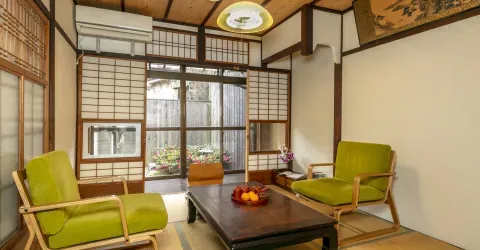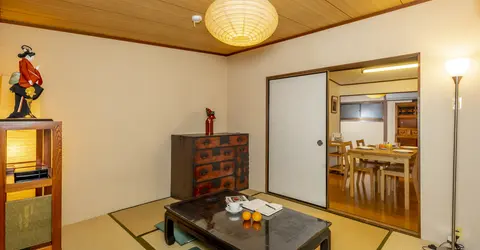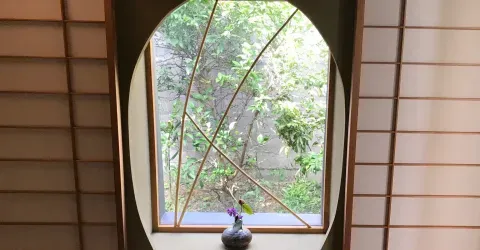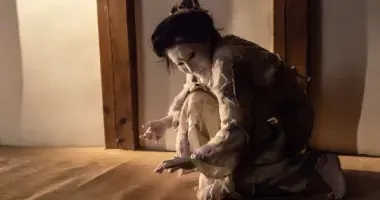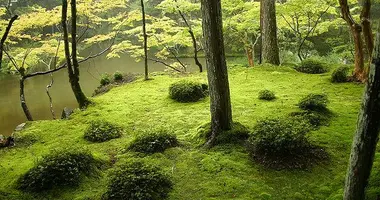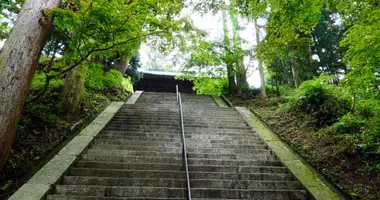Otagi Nenbutsuji Temple: A Hidden Gem of Whimsical Buddhist Art in Kyoto
- Published on : 14/06/2024
- by : Japan Experience
- Youtube
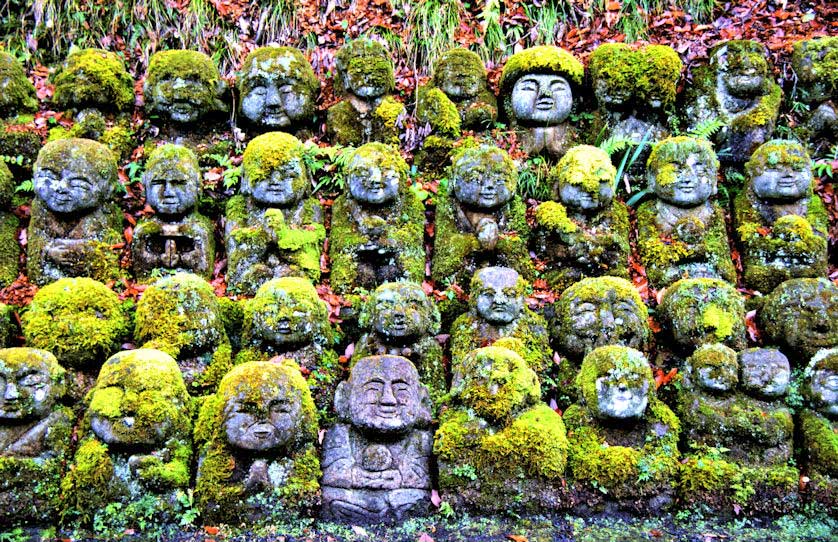
Covered in moss, and with each one unique, the Rakan statues at Otagi Nembutsuji are missed by most visitors to Arashiyama
Nestled in the tranquil hills of Arashiyama, Otagi Nenbutsuji Temple stands as a testament to artistic creativity and spiritual resilience. This unique Buddhist sanctuary houses over 1,200 distinctive stone statues, each with its own personality and charm. Unlike the solemn atmosphere of many temples, Otagi Nenbutsuji offers visitors a delightful blend of spirituality and whimsy. Its remote location and fascinating history make it an off-the-beaten-path treasure for those seeking a truly memorable Kyoto experience. As you explore this hidden gem, you'll discover a world where faith, art, and nature intertwine in the most unexpected and captivating ways.
The fascinating history and multiple relocations of Otagi Nenbutsuji
Otagi Nenbutsuji's history is a tale of perseverance through adversity. Originally founded in 766 by Empress Shotoku, the temple was initially located in the Higashiyama district near Gion. However, fate had other plans for this resilient sanctuary. The temple fell victim to a devastating flood when the nearby Kamogawa River overflowed its banks, forcing its first relocation.
In the early Heian period (794-1192), the temple was rebuilt in northeastern Kyoto as a branch of the powerful Enryaku-ji Temple. Despite this move, Otagi Nenbutsuji continued to face challenges. Over centuries, it suffered damage from typhoons, fires, and neglect, leaving only three structures intact - the main hall, the Jizo Hall, and the temple gate.
In a bid to preserve these remaining treasures, the temple was dismantled and relocated to its current location in Arashiyama in 1922. However, misfortune struck again in 1950 when a powerful typhoon caused severe damage to the newly reconstructed temple. This series of setbacks set the stage for the temple's remarkable transformation in the latter half of the 20th century.
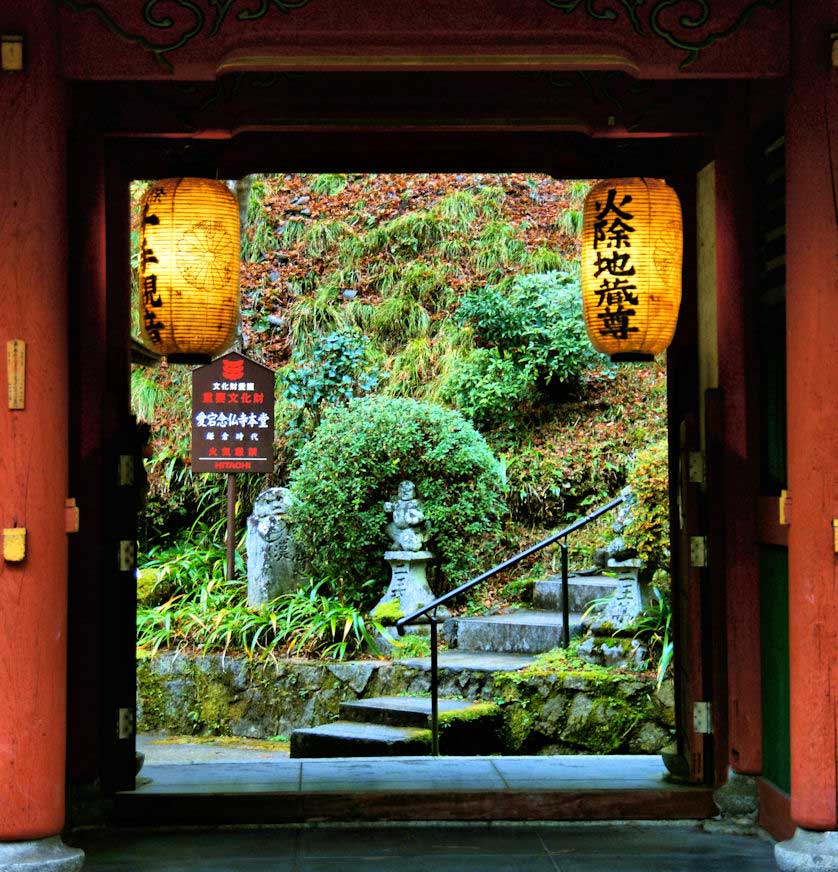
The entrance to Otagi Nembutsuji Temple, Arashiyama, Kyoto
Kocho Nishimura: The visionary priest who transformed the temple
The turning point in Otagi Nenbutsuji's history came in 1955 with the appointment of Kocho Nishimura as the temple's head priest. Nishimura was not only a Buddhist monk but also a talented sculptor specializing in Buddhist statuary. His unique combination of spiritual devotion and artistic skill would prove instrumental in revitalizing the temple.
Under Nishimura's guidance, extensive renovation efforts began in 1981, lasting for a decade. During this period, he conceived an innovative idea that would set Otagi Nenbutsuji apart from other temples in Kyoto. Nishimura decided to involve the community in the temple's rebirth by teaching sculpture to visitors and encouraging them to create their own rakan statues - representations of Buddha's disciples.
This participatory approach to temple restoration was unprecedented. Nishimura instructed his students to bring forth unique, personal figures from the stone, resulting in a diverse array of expressive statues. Some depict solemn prayer, while others showcase joy, laughter, or even reflect the carvers' personal interests. This creative process not only restored the temple but also forged a deep connection between the community and the sacred space.
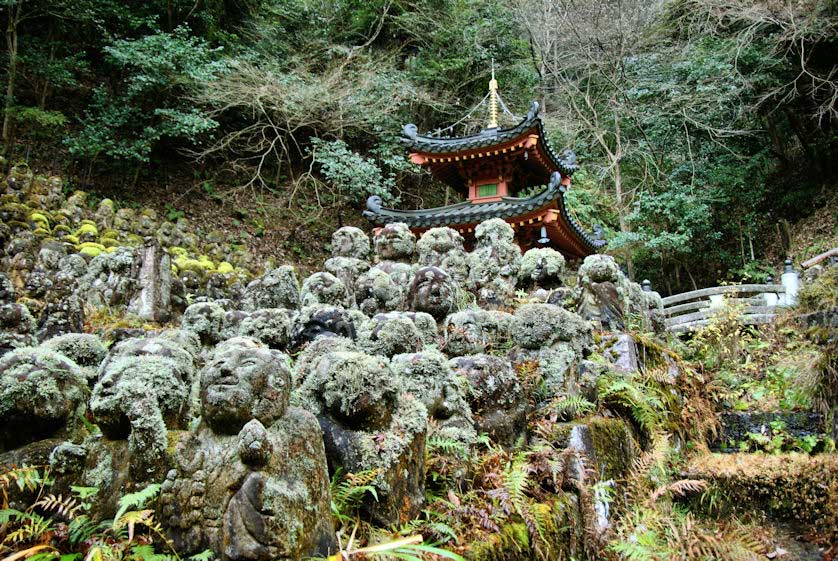
A small selection of the 1200 unique statues of Rakan at Otagi Nembutsuji Temple
The 1,200 unique rakan statues: A blend of spirituality and humor
The crowning achievement of Otagi Nenbutsuji's restoration is undoubtedly its collection of 1,200 rakan statues, which have transformed the temple grounds into an open-air gallery of Buddhist art. These statues, representing the disciples of the historical Buddha, are remarkable for their individuality and often whimsical nature.
As you wander among the statues, you'll encounter an astonishing variety of expressions and poses. Some rakan appear deep in meditation, while others seem caught in moments of laughter or surprise. You might spot a figure holding a tennis racket, another listening to a Walkman, or two sharing a cup of sake. This playful approach to religious iconography creates a unique atmosphere that balances reverence with joy.
The statues' diversity reflects the wide range of people who created them under Nishimura's guidance. Each sculptor left their personal mark, resulting in a collection that feels both ancient and contemporary. Despite being relatively new, many of the statues are now covered in moss, lending them an air of timeless antiquity that blends seamlessly with the temple's long history.
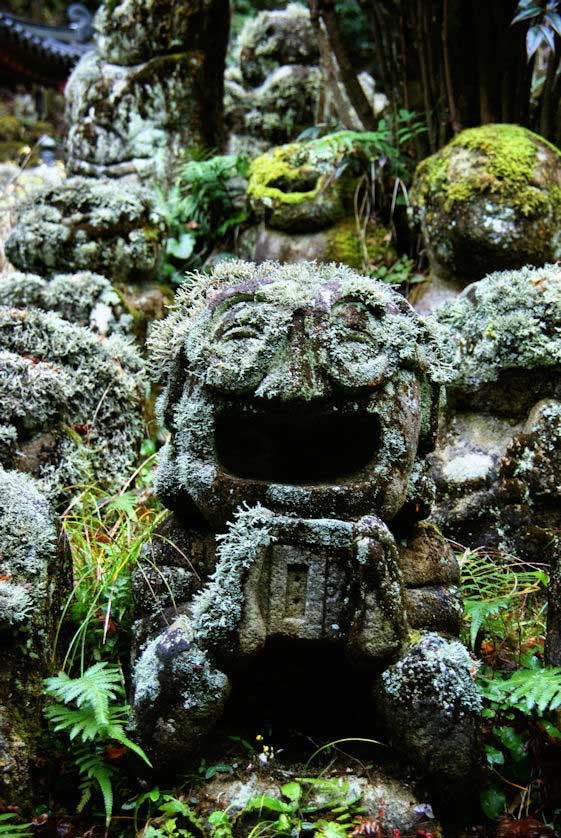
A Buddhist figure holding a "Walkman" gives a clue to the age of the statues at Otagi Nembutsuji Temple
Exploring the temple grounds and its notable features
Beyond the captivating rakan statues, Otagi Nenbutsuji offers several other points of interest for visitors. The main hall, dating back to the Kamakura period (1185-1333), houses the temple's principal image: a statue of Kannon, the bodhisattva of mercy. This important cultural property stands as a testament to the temple's long and storied past.
Near the entrance, you'll find the Niomon gate guarded by two fierce-looking statues, setting the stage for your exploration. As you ascend the temple grounds, you'll encounter the Sambo-no-Kane, or "Bells of the Three Treasures." Visitors are encouraged to ring these bells, which represent Buddha, Dharma, and Sangha, for good luck.
Another notable feature is the Fureai Kannon, a unique statue designed to be touched. This compassionate figure was created with visually impaired visitors in mind, allowing them to experience the statue through touch. The grounds also include a small pagoda called Taho-to, which houses a statue of Buddha preaching to his disciples.
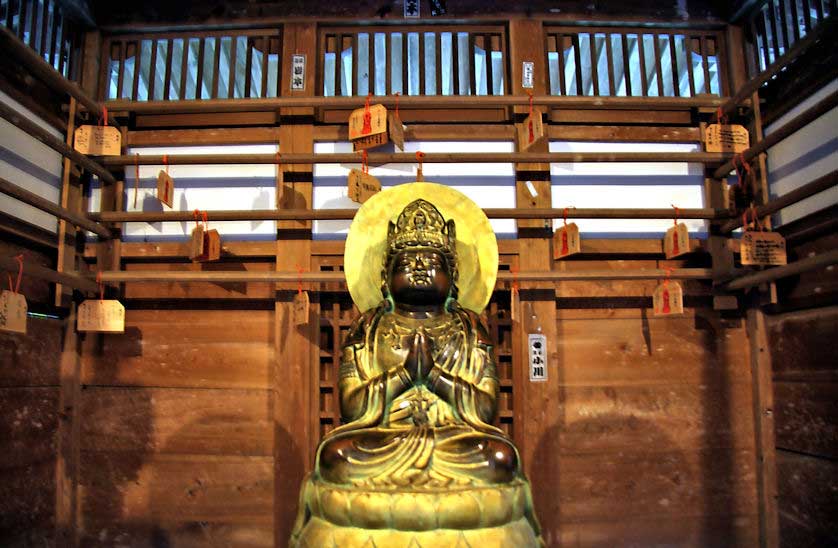
One of several statues of Kannon that can be seen at Otagi Nembutsuji Temple, Arashiyama, Kyoto
Visitor information and how to reach Otagi Nenbutsuji
Otagi Nenbutsuji is open daily from 8:00 AM to 5:00 PM, with admission costing 300 yen for adults (free for children 15 and under). The temple's remote location means it rarely gets crowded, allowing for a peaceful and contemplative visit.
To reach the temple, take the JR San-In/Sagano Line to Saga-Arashiyama Station. From there, you can either take a 20-minute bus ride or enjoy a scenic 40-minute walk through the charming Arashiyama area. The walk takes you past other notable sites like Adashino Nenbutsu-ji Temple and along the picturesque Saga-Toriimoto preserved street.
For those using public transportation, buses 62, 72, 92, and 94 from the Nonomiya bus stop near Saga-Arashiyama Station will take you directly to the Otagidera-mae bus stop in front of the temple. Alternatively, a taxi from central Arashiyama is a quick and convenient option, costing around 1,000 yen.
The significance of Otagi Nenbutsuji in Japanese Buddhist culture
Otagi Nenbutsuji holds a unique place in Japanese Buddhist culture, bridging traditional spirituality with contemporary artistic expression. Its approach to restoration and community involvement has created a new model for preserving and revitalizing religious sites. The temple demonstrates how sacred spaces can evolve and remain relevant while maintaining their spiritual essence.
The rakan statues, with their diverse expressions and modern elements, offer a fresh interpretation of Buddhist iconography. They challenge the notion that religious art must be uniformly solemn or ancient to be meaningful. This playful yet respectful approach to spirituality resonates with many visitors, especially younger generations seeking a more accessible form of religious experience.
Moreover, Otagi Nenbutsuji serves as a living museum of contemporary folk art, showcasing the creativity of ordinary people guided by a master sculptor. It stands as a testament to the power of community engagement in preserving cultural heritage and the enduring ability of Buddhist teachings to inspire artistic expression.
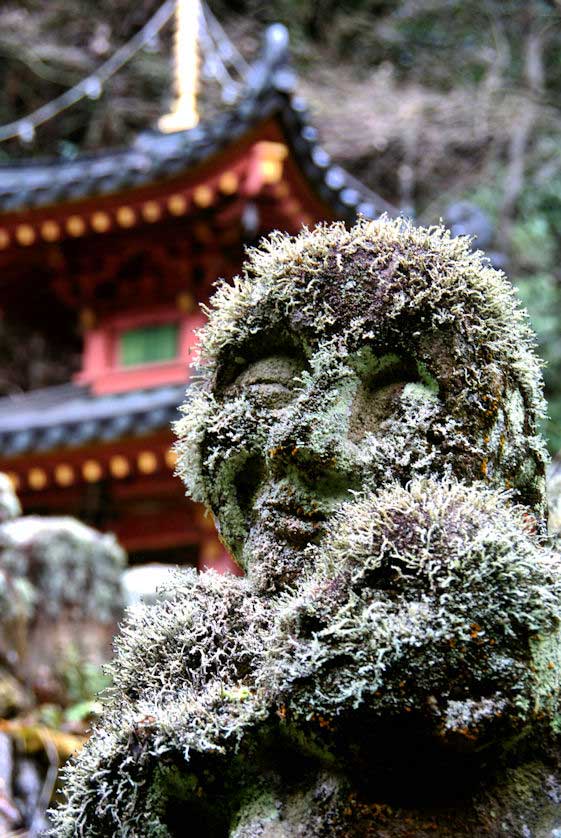
Moss-covered statues at Otagi Nembutsuji Temple in Arashiyama
Tips for making the most of your visit to this off-the-beaten-path temple
To fully appreciate Otagi Nenbutsuji's unique charm, consider these tips for your visit:
- Allow plenty of time: While the temple grounds aren't expansive, you'll want to examine the statues closely. Plan for at least an hour to explore at a leisurely pace.
- Bring a camera: Unlike many temples, photography is allowed and encouraged here. The statues offer countless opportunities for memorable shots.
- Visit during autumn: If possible, plan your trip during the fall months when the surrounding moss and foliage create a stunning backdrop for the statues.
- Combine with other Arashiyama attractions: Make a day of it by visiting other nearby sites like the Tenryuji Temple and the famous bamboo grove.
- Engage with the statues: Try to find the most unusual or personally meaningful rakan. Many visitors enjoy the game of finding a statue that resembles themselves or someone they know.
- Ring the Sambo-no-Kane: Don't forget to ring the Bells of the Three Treasures for good luck before you leave.
By venturing off the beaten path to visit Otagi Nenbutsuji, you'll discover a truly unique aspect of Kyoto's rich cultural tapestry. This temple offers a rare blend of spiritual tradition, artistic innovation, and natural beauty that will leave a lasting impression on any traveler seeking to explore the depths of Japanese Buddhist culture.
